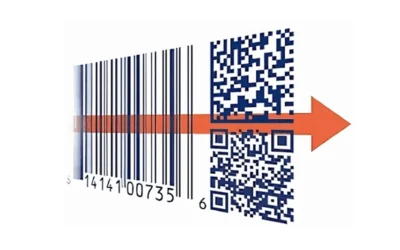Retail professionals know how vital inventory tracking is to staying profitable. It’s how you ensure that products are available when customers expect them to be. It’s how you prevent loss due to theft. It’s how you know when to order new product, how much product to order, and so much more.
Nevertheless, inventory tracking is time-consuming and many retailers continue to use inefficient periodic inventory systems. With periodic inventory systems, you only know what’s going on at specific times, following a time-consuming, physical inventory check. These types of checks are a grind – either you have to bring all your employees in for a massive physical count – which is boring, expensive to implement and may not be entirely accurate – or you pay the exorbitant fees for an inventory counting company to do it for you.
How a Perpetual Inventory System Can Help
If you’re relying on a periodic inventory system, investing in a perpetual inventory system can transform your business. A perpetual inventory system involves implementing a solution that tracks your inventory at all times and gives you a real-time picture of your inventory at the touch of a button, whenever you want.
The idea of perpetual inventory has been around for years, and retailers have often used barcode technologies to get as close as possible to implementing it. However, the best perpetual inventory systems now use radio frequency identification (RFID) tags on retail goods, combined with powerful RFID tracking software. These tools provide retailers with automatic inventory updates every time an item is sold, returned or arrives in shipping. The benefits of this system were detailed by a Wal-Mart-commissioned study all the way back in 2008, and RFID technology has only improved since then.
What is the difference between a perpetual inventory system and a periodic inventory system?
A perpetual inventory system that circumvents the time-consuming physical inventory checks of the past saves money, reduces overstock and ensures your customers are satisfied when items are available. Combined with RFID software, you can get your inventory numbers from the factory, the warehouse, and the retail store in an instant at any time.
In contrast, periodic inventory methods involve comparing the latest inventory counts to the previous numbers and checking total purchases for the accounting period to see how everything adds up. Because of this, retailers only have an accurate picture of their inventories after labor-intensive counts have been performed. At all other times, they are essentially flying blind.
MSM Solutions’ PortalTrack: Combining Perpetual Inventory with Omnichannel
More and more retailers are focused on omnichannel, which means giving customers the ability to order and pay for products online and pick the products up at a physical store location. In order to truly implement omnichannel, however, a perpetual inventory system is essential. You must have accurate inventory counts at all times in order for your website, mobile app, social media or any other channel to correctly reflect your stock. Without this seamless inventory tracking, customers may leave your store disappointed after discovering an item is out of stock despite your website saying otherwise.
MSM Solutions’ PortalTrack allows retailers to track their inventories from the factory to the retail floor, making perpetual inventory and omnichannel implementation a breeze. PortalTrack offers real-time inventory accuracy using the latest RFID technology, reducing the need for physical cycle counts. PortalTrack is also highly customizable to meet the unique inventory needs of your business. Aside from implementing perpetual inventory and omnichannel, PortalTrack is also proven to reduce shrink, lower operational costs and prevent counterfeiting.



